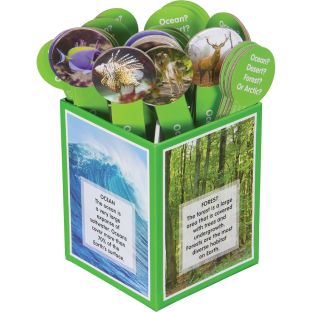Science – Preschool
Popular Preschool Science Materials at Really Good Stuff
Inspire learning and engagement with these popular Preschool Science Materials. These favorite Preschool Science Materials are a great fit for your PreK grade to 8th grade students.
Preschool Science Products
Top-Rated Preschool Science Materials | 2026 School Year
Get top-rated Preschool Science Materials from Really Good Stuff. Teachers give these 8 Science Materials options an average rating of 4.9 stars, making them some of the best Preschool Science Materials available.
Shop Science Materials by Category
Learn More About Preschool Science Materials
Equip your classroom with Really Good Stuff’s Preschool Science supplies. Our catalog of 116 high-quality Science Materials start at $1.16. From premium brands like Excellerations®, Steve Spangler Science®, and Really Good Stuff®.
Really Good Stuff’s Preschool Science products work for ages 0 to 4 years and Newborn to PreK grade. Preschool teachers can combine Science supplies with other Science Materials for classrooms with additional products like Earth & Space Science, Steve Spangler Science®, and Life Science.
Make Really Good Stuff your first choice when looking for Preschool Science supplies for the Preschool classroom.
Science in the preschool classroom offers a rich opportunity for young minds to explore, question, and understand the world around them. Teachers often integrate science through hands-on activities that spark curiosity and enthusiasm. Common ways to incorporate science include sensory tables filled with various materials like sand, water, or rice, allowing children to explore textures and properties; simple experiments like planting seeds to observe growth and learning about life cycles; and interactive science centers filled with magnifying glasses, magnets, and bug viewers that encourage exploration and discovery. These activities not only introduce basic scientific principles but also help develop fine motor skills, vocabulary, and critical thinking.
When choosing science products for your preschool classroom, consider these three tips for optimal engagement and learning. Firstly, select age-appropriate materials that are safe and manageable for young children, typically ages 3 to 5 in preschool settings. Make sure products are durable and can withstand enthusiastic exploration. Secondly, look for products that are versatile and can be used in multiple types of activities, such as magnifying glasses that can be used for both nature walks and examining classroom objects. Lastly, ensure that the products are visually stimulating and colorful to capture the children’s attention and interest. Items like colorful sorting bins, bright counting and sorting insects, and vividly illustrated books can make a significant difference in engaging young learners.
When buying science products for a preschool classroom, it’s crucial to take into account the unique developmental needs and interests of younger children compared to older students. Preschoolers benefit from tactile, hands-on learning experiences that are open-ended and exploratory rather than structured and outcome-focused. Unlike science products for older grades, which might include more detailed experiments and complex instructions, preschool science tools should be simple, intuitive, and safe for children who are developing their motor skills and hand-eye coordination. Always prioritize safety, ease of use, and the potential for interactive, imaginative play when selecting science products for the youngest learners. This thoughtful approach ensures that the materials will not only educate but also delight and inspire curious minds.
FAQs for Preschool Science Materials
Which Preschool Science Materials are rated highest by teachers for PreK to 8th grade?
- Excellerations® LED Light and Bright Panel (5 stars) – $142.99
- Excellerations® Building Brilliance® Magnetic Shapes – 100 Pieces (5 stars) – $114.99
- Excellerations® earlySTEM™ Toddler Specimen Viewers – Set of 4 (5 stars) – $43.99
What Preschool Science Materials are teachers buying most?
What kinds of Preschool Science Materials do teachers usually need?
What are the least expensive Preschool Science Materials?
- Excellerations® earlySTEM™ Toddler Specimen Viewers – Set of 4 (5 stars) – $43.99
- Science Flip Chart Primary – 1 flip chart (5 stars) – $36.10
- STEM Folders – 12 folders (5 stars) – $23.99
























